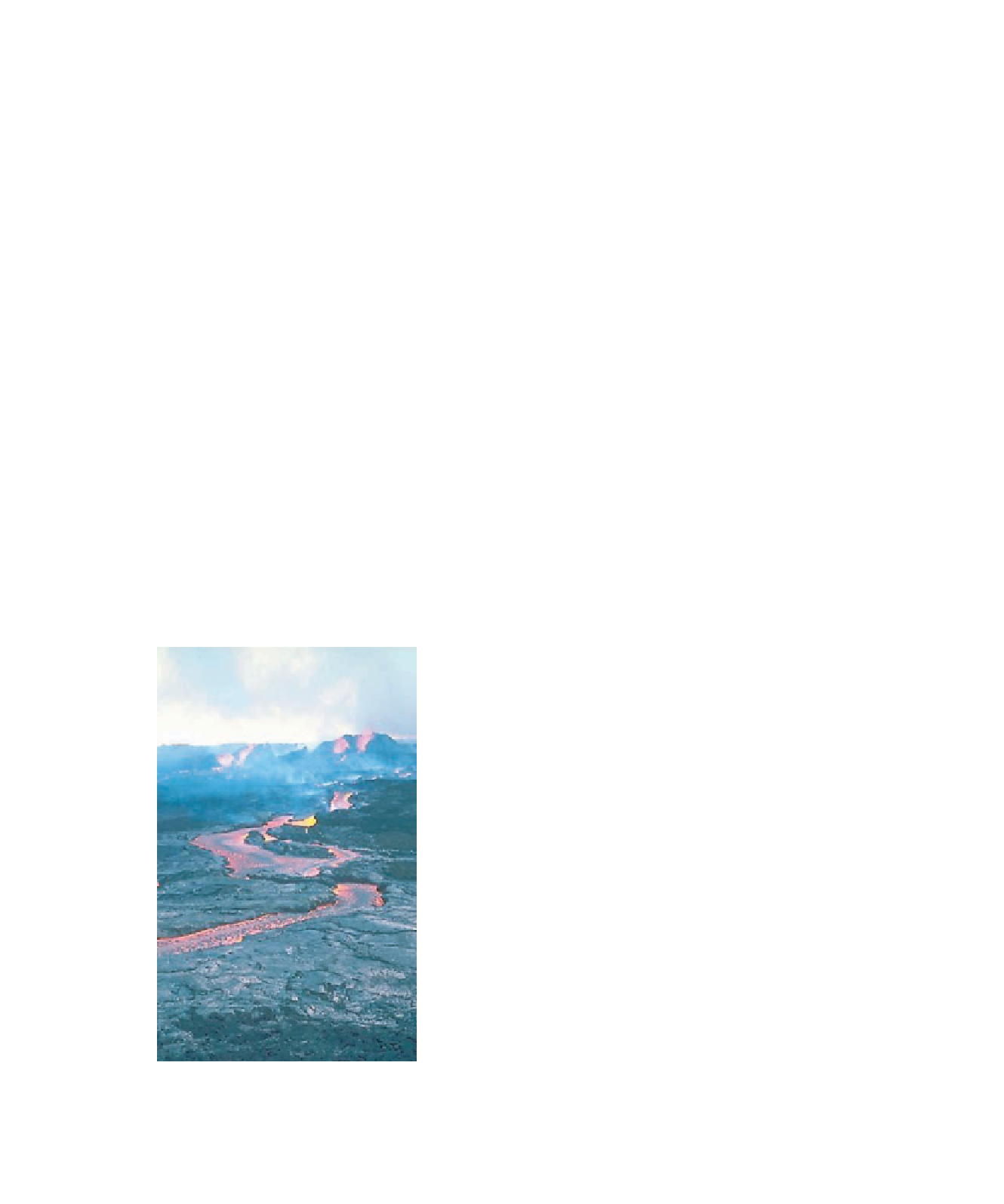Geology Reference
In-Depth Information
place more than a year later when water encountered some
of the still-hot pyroclastic materials. The reason that lava
and magma retain heat so well is that rock conducts heat
so poorly. Accordingly, the interiors of thick lava flows and
pyroclastic flow deposits may remain hot for months or
years, whereas plutons, depending on their size and depth,
may not cool completely for thousands to millions of
years.
mobile than felsic magma and lava flows (
Figure 4.3).
One mafic flow in 1783 in Iceland flowed nearly 80 km,
and geologists traced ancient flows in Washington State
for more than 500 km. Felsic magma, in contrast, because
of its higher viscosity, does not reach the surface as often as
mafic magma. And when felsic lava flows do occur, they
tend to be slow moving and thick, and move only short dis-
tances. A thick, pasty lava flow that erupted in 1915 from
Lassen Peak in California fl owed only about 300 m before it
ceased moving.
Temperature and silica content are important controls
on the viscosity of magma and lava, but other factors include
gases, mostly CO
2
, as well as the presence of mineral crystals
and friction from the surface over which lava fl ows. Lava with
a high content of dissolved gases fl ows more readily than one
with a lesser amount of gases, whereas lava with many crystals
or that fl ows over a rough surface tends to be more viscous.
◗
All liquids have the property of
viscosity
, or resistance to
flow. Water's viscosity is very low so it is highly fluid and
flows readily. For other liquids, viscosity is so high that
they fl ow much more slowly. Good examples are cold mo-
tor oil and syrup, both of which are quite viscous and thus
fl ow only with diffi culty. But when these liquids are heated,
their viscosity is much lower and they fl ow more easily; that
is, they become more fluid with increasing temperature.
Accordingly, you might suspect that temperature controls
the viscosity of magma and lava, and this inference is partly
correct. We can generalize and say that hot magma or lava
moves more readily than cooler magma or lava, but we must
qualify this statement by noting that temperature is not the
only control of viscosity.
Silica content strongly controls magma and lava vis-
cosity. With increasing silica content, numerous networks
of silica tetrahedra form and retard flow because for flow
to take place, the strong bonds of the networks must be
ruptured. Mafic magma and lava with 45-52% silica have
fewer silica tetrahedra networks and, as a result, are more
AND CHANGE?
Most of us have not witnessed a volcanic eruption, but we
have seen news reports or documentaries showing magma
issuing forth as lava fl ows or pyroclastic materials. In any
case, we are familiar with some aspects of igneous activ-
ity, but most people are unaware of how and where magma
originates, how it rises, and how it might change. Indeed,
many believe the misconception that lava comes from a
continuous layer of molten rock beneath the crust or that it
comes from Earth's molten outer core.
◗
Figure 4.3
Viscosity of Magma and Lava Temperature is an
important control on viscosity, but so is composition. Mafi c lava
tends to be fl uid, whereas felsic lava is much more viscous.
A mafi c lava fl ow in 1984 on Mauna Loa Volcano in Hawaii.
These fl ows move rapidly and form thin layers.
The Novarupta lava dome in Katmai National Park in Alaska.
The lava is felsic and viscous, so it was extruded as a bulbous
mass. This image was taken in 1987.
a
b




Search WWH ::

Custom Search